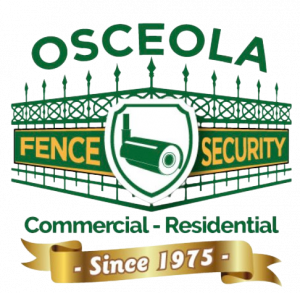What Is Industrial Fencing?
Industrial fencing is not only a precautionary measure but a sound investment towards securing your business. It requires choosing an apt solution while being in metropolitan cities, where properties have unique security challenges. The essence of industrial factory fencing doesn’t limit itself to merely setting boundaries but rather offers safety along with great looks for the commercial property.
Let’s dive deeper into why industrial fencing is a necessity, the options available, and why partnering with the right provider can make all the difference.

Industrial Commercial Fencing: Strength and Security for Your Property
Commercial fencing, which is industrially manufactured, protects the premises of bigger areas like warehouses, factories, and other retail centers or complexes. Compared to residential fences, industrial-type solutions are crafted with strength, security, and functionality in mind. These are designed to stand up against severe weather, hard wear, and even threats of a criminal nature.
Invest in superior industrial fencing, and protect your property-invest in peace of mind. Be it very valuable inventories, the safety of employees or visitors, prevention of unauthorized access, or simple cases where industrial fencing has proven to be reliable.
Importance of Industrial Fencing
Businesses in the modern world have to face different types of threats that range from vandalism to theft. In such cases, industrial fencing forms the first line of defense against these risks. Some of the key reasons why industrial fencing is important include:
- Better Security: Protection of assets, employees, and sensitive operations from intruders.
- Long-term Durability: High-quality materials, including steel and aluminum, ensure your investment lasts for years.
- Legal Compliance: Meet local zoning and permitting regulations with professionally installed fencing.
- Increased Privacy: Protect confidential activities or highly valued equipment from public view.
- Aesthetic Value: Modern fencing options boost your property’s curb appeal, impressing your clients and partners.
Types of Industrial Fencing
Not all industrial property security is the same, and most choices of one over another are solely dependent on singular needs, property layout, and budget. Following are some of the most popular types of industrial fencing and their unique advantages:
1. Steel Fencing
Steel is the gold standard of industrial fencing options because it is incredibly strong and resilient. Having anti-climb features, steel fences have become perfect for high-security areas and can be powder-coated against corrosion.
2. Chain Link Fencing
Chain link fencing is one of the versatile and cost-effective options for commercial properties. It allows visibility while maintaining security and is easily customizable with barbed wire or privacy slats.
3. Aluminum Fencing
Aluminum fencing will work just great in the ever-changing climate because of their strength, yet lightweight, rust-resistant, and impervious to weathering properties. They are also added as an aesthetic appeal for a modern look on your property.
4. Welded Mesh Panels
5. Composite Fencing
Composite fencing combines the natural beauty of wood fencing with the durability of synthetic materials and affords properties privacy, security, and low maintenance. This serves as an environmentally friendly option for those businesses trying to cut their carbon footprint.
6. Ornamental Iron Fencing
Or, in case the businesses are keen about aesthetics just as much as about security, then there are ornamental iron fences that provide quite strong yet elegant solutions. These can be made to integrate complex patterns that fit your property’s architecture.
Further Features for Better Security
The advanced industrial fencing solutions are way beyond simple barriers. Advanced features can take the security and functionality of your property to entirely new levels and include :
- Anti-Climb Spikes: The pointed deterrents along the top of the fence prevent unauthorized climbing.
- Electric Fencing: A wire can also be electrified to bring extra security.
- Access Control Systems: Integration of gates with card readers or biometric scanners for controlled entry.
- Perimeter Lighting: Accomplish more visibility to deter intruders with well-placed lighting.
- Surveillance integration: Cameras or motion sensors to be installed directly on your fence for 24/7 monitoring.
Advantages of Long-Lasting Fencing Solution Chosen Durability
Is a significant concern that buyers consider when opting for industrial fencing. Durable and high-quality material is considered in investment in a number of ways:
- Cost-Effective: Durable fences require very low maintenance and minor repair, resulting in cost-effective solutions.
- Weather Resistance: Heavy snow, rain, and extremes in heat do not hurt them.
- Assurance of Security: Steels and aluminum provide higher protection against forced entries.
- Eco-Friendly Options: Composite fencing is an environmentally friendly option, enabling sustainability.
Why Industrial Fencing is Essential for Business Security
Industrial fencing is not only a precautionary measure but a sound investment towards securing your business. It requires choosing an apt solution while being in metropolitan cities, where properties have unique security challenges. The essence of industrial factory fencing doesn’t limit itself to merely setting boundaries but rather offers safety along with great looks for the commercial property.
Let’s dive deeper into why industrial fencing is a necessity, the options available, and why partnering with the right provider can make all the difference.
1. Expertise You Can Trust
2. Comprehensive Warranty
3. Tailored Solutions for Every Industry
4. Competitive Pricing
Industrial Fencing: Frequently Asked Questions
How do I choose the right type of fencing for my property?
Assess your needs: security level, budget, aesthetic preferences. Our experts will be able to help you choose among options.
Is there a permit required to install industrial fencing?
Yes, most industrial fencing projects require permits. We’ll assist you in navigating the permitting process to ensure compliance with local regulations.
How long does installation take?
The timeline depends on the project’s complexity and size. On average, most installations are completed within 1-2 weeks.
Ready to Secure Your Property?
Don’t compromise on safety or quality when it comes to protecting your business. Osceola Fence Company is proud to incorporate the most advanced technology with quality craftsmanship into durable fence building and installation.
Call us today for a free consultation, and let us design and install a fencing system that will last for years to come.







